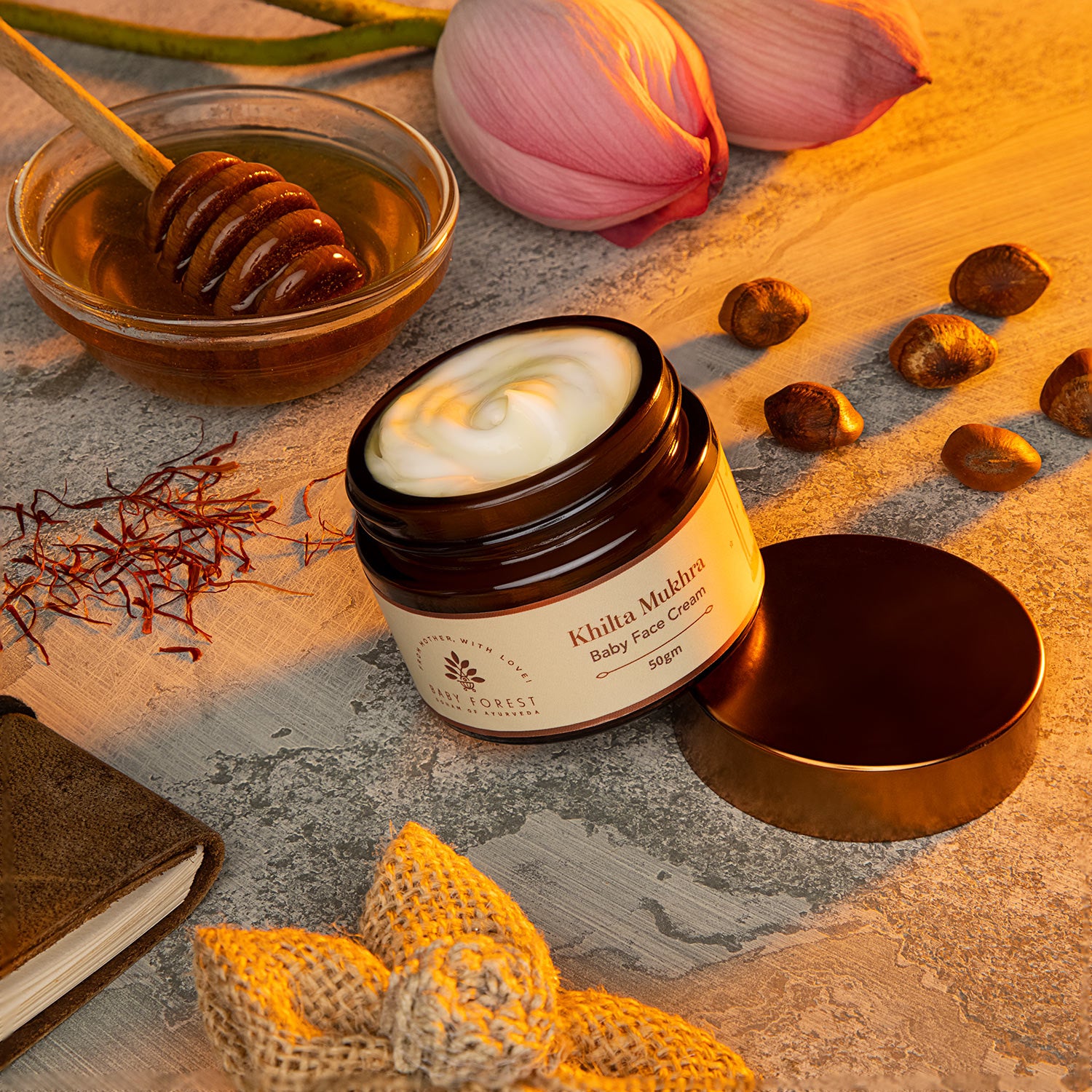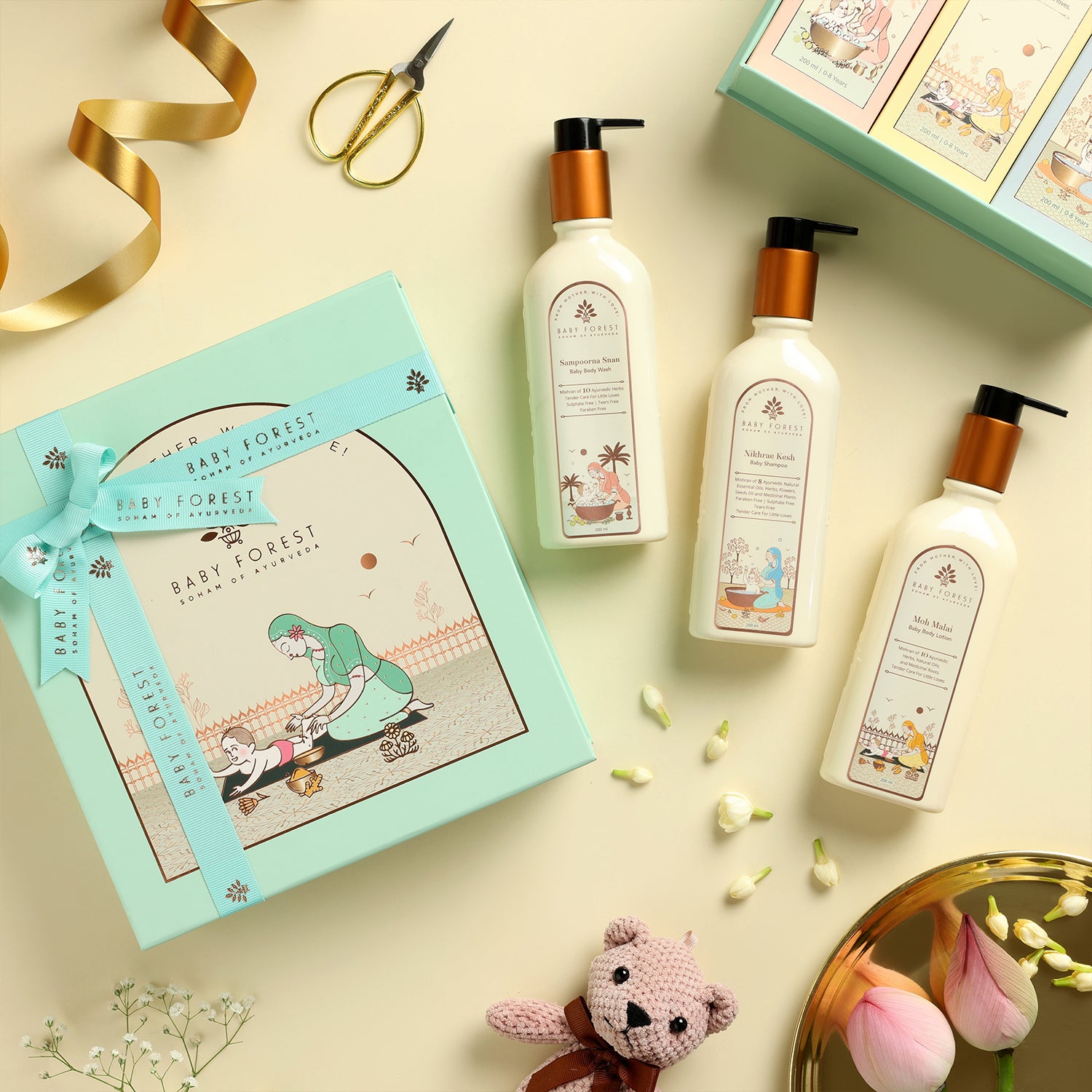
Understanding PURPLE Crying: A Complete Guide for New Parents


Rs. 795.00

Rs. 1,890.00

Rs. 695.00

Rs. 895.00

Rs. 1,095.00

Rs. 745.00

Rs. 2,505.00

Rs. 795.00

Everything You Need to Know About the Naamkaran Ceremony

Annaprashan: The First Meal Of Your Baby

Mundan Ceremony: The Baby's First Haircut

5 Baby Rituals That Every Parent Should Know

Jatakarma: The Baby's First Ritual.

Baby Playtime Guide: What You Must Consider While Playing...

Early Signs of Postpartum Complications: What to Look Out...
Baby ear piercing is a common practice in many cultures around the world, often steeped in tradition and personal significance. Whether you are considering ear piercing for your baby for cultural, aesthetic, or personal reasons, it's important to understand the process, the benefits, and the necessary aftercare. This guide will provide you with everything you need to know about baby ear piercing, ensuring you make an informed and safe decision for your little one.
In many cultures, ear piercing for babies is more than just a fashion statement; it holds deep cultural and religious significance. One such tradition is the Karnavedha Sanskar, an ancient Indian ritual where a baby's ears are pierced. The Karnavedha ceremony is one of the 16 sacraments, or 'samskaras,' in Hindu culture, symbolizing the child's ability to hear and absorb knowledge.
Indian baby ear piercing is often performed during a special ear-piercing ceremony where family and friends gather to celebrate. This event is seen as a rite of passage and is usually conducted by a priest or a trained professional. The Karnavedha sanskar is believed to have several spiritual and health benefits, including the stimulation of vital energy points and the improvement of cognitive functions.
The ideal time to pierce a baby's ears varies among cultures and personal preferences. Some parents choose to do it when their baby is just a few months old, while others may wait until the child is older. There are several factors to consider when deciding the best time for a baby ear piercing:
Knowing what to expect during the ear-piercing ceremony can help you prepare and reduce anxiety for both you and your baby. Here's a step-by-step overview of the process:
There are several perceived ear-piercing benefits for babies, especially within cultural contexts:
Proper aftercare is essential to ensure that your baby's ears heal properly and to avoid complications. Here are some key aftercare tips:
Clean the pierced area twice daily with an antiseptic solution or saline water. Avoid using alcohol or hydrogen peroxide, as these can dry out the skin and delay healing.
Try to minimize touching or twisting the earrings to prevent irritation and introduce bacteria. Always wash your hands before handling the earrings.
Keep an eye out for signs of infection, such as redness, swelling, discharge, or increased tenderness. If you notice any of these symptoms, contact your pediatrician immediately.
Use hypoallergenic earrings, preferably made of surgical steel, gold, or platinum, to reduce the risk of allergic reactions.
Baby ear piercing is a significant decision that involves careful consideration of cultural practices, health benefits, and personal preferences. Whether you're participating in a traditional Karnavedha ceremony or simply choosing to pierce your baby's ears for aesthetic reasons, it's essential to understand the process and follow proper aftercare instructions. By selecting a qualified professional and adhering to recommended practices, you can ensure a safe and positive experience for your little one. Celebrate this special milestone with confidence, knowing that you've made an informed and thoughtful choice for your baby's well-being.

